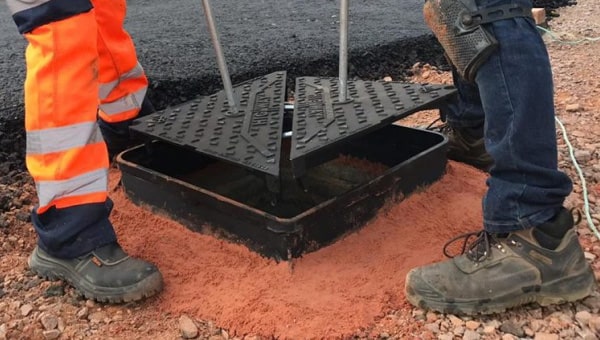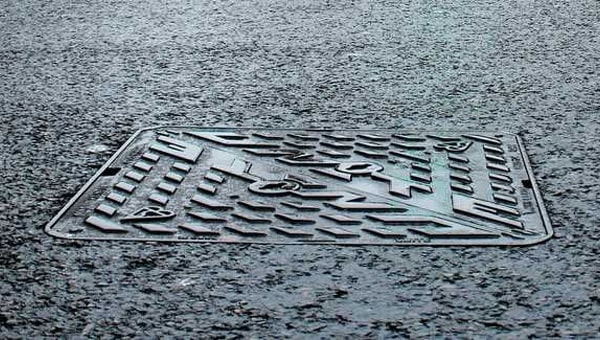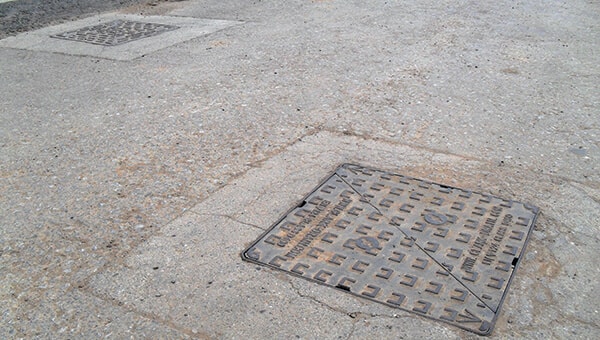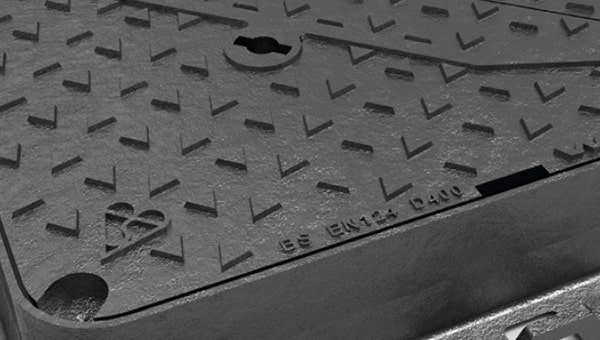Under the FACTA standard fabricated manhole covers and access covers are graded by different loading applications, ranging from class A to F. Each loading application has a specific meaning and it is very crucial that the right one is selected, otherwise, if the loading is wrong, your cover will not last and could become dangerous.
The loading applications are the first thing you should consider when looking to purchase manhole covers or access covers. Not sure if it's a manhole cover or access cover you're looking for? Check out our handy guide to what's the difference between manhole covers and access covers.
The history of FACTA
FACTA (Fabricated Access Covers Trade Association) was set up in 1993 by leading manufacturers of steel access covers and frames to provide “a specification that allows fabricated access covers to be made from a variety of materials and offer flexibility in its design, something that isn't achievable for cast covers.”
While BS EN 124 does offer ratings for steel under its purview, it is has been argued that some of its test procedures are inappropriate for steel. According to Wrekin, one of the UK’s leading suppliers of steel access covers and member of FACTA, the BS EN 124 standard “defines certain test loads and minimum permanent deflections that are impractical from an economic point of view and it is maintained are unnecessary in certain slow moving traffic situations.” They also explain how steel fabrication is a highly flexible process that allows non-standard sizes and designs to be made which are not covered by BS EN 124.
Find out more about the differences between BS EN 124 and FACTA classifications for a more detailed look into their similarities and differences.
This is how the FACTA standard came to be; manufacturers developed their own load test calculations, derived from structural engineering calculations for fabricated components, which take into consideration the elastic nature of steel. From this, FACTA produced a range of classifications specific to the fabrication of steel access covers and frames.
What are FACTA classifications for steel access covers?
Access covers rated by FACTA are simply listed with a rating from FACTA A to FACTA F. The primary factor they use is the slow moving pneumatic wheel load, which is deemed to be speeds of no greater than 20mph in low intensity trafficked areas. FACTA also offer ratings for solid wheel loads, along with calculations for maximum design loads and load bearing capacities, which can be seen in the full classification table image we’ve provided.
| FACTA Class | Overview | Typical Applications |
|---|---|---|
| FACTA A | Pedestrian use and up to 5kN (0.6 tonne) wheel loads | Internal and external areas which can only be used by pedestrians or cycles, such as toilets, changing rooms, footways and cycle tracks |
| FACTA AA | Small vehicles up to 15kN (1.5 tonne) wheel loads | Very light industrial areas, where small trolleys and private cars/vans can manoeuvre, such as domestic driveways, trolley parks and hospital wards |
| FACTA AAA | Cars up to 25kN (2.5 tonne) wheel loads | Service areas, shopping malls, light industrial areas (pneumatic tyres); light industrial areas, where trolleys and light pallet trucks operate (solid tyres) |
| FACTA B | Cars and vans up to 50kN (5.0 tonne) wheel loads | Pedestrian precincts, light commercial delivery or parking areas (pneumatic tyres); factories, industrial plants, where small pallet trucks operate (solid tyres) |
| FACTA C | Trucks up to 65kN (6.5 tonne) wheel loads | Factories, industrial plants, commercial delivery or parking areas (pneumatic tyres); industrial areas where pallet and small fork-lift trucks operate (solid tyres) |
| FACTA D | Articulated lorries up to 108kN (11 tonne) wheel loads | Heavy duty plant areas and service roads where HGVs can reach speeds of 20 mph max (pneumatic tyres); heavy duty industrial areas where medium duty fork-lift trucks operate (solid tyres). |
| FACTA E | Heavy, moving plant up to 158kN (16 tonne) wheel loads | Dockside and container storage areas where heavy transporters operate (pneumatic tyres); very heavy industrial areas where large heavy duty fork-lift trucks operate (solid tyres) |
| FACTA F | Aircraft and heavy plant up to 237kN (24 tonne) wheel loads | Airfield aprons, where particularly heavy wheel loads are imposed by aircraft and towing vehicles |
These classifications are much more comprehensive than the historical standards they replace and offer more detailed calculations in how they rate suitability to the various applications as seen in the table below.
| FACTA Class | BS 497 Equivalent | Historical GLVW Description | Historical Load Description | SMWL Pneumatic Tyres | SMWL Solid Tyres | Acceptance Load Test | Strength Load Test |
|---|---|---|---|---|---|---|---|
| A | C | 2.5 tonne | Pedestrian | 0.6 tonne (5kN) | - | 5.0 x 1.0 x 1.0 = 5.0kN | 5.0 x 1.6 = 8.0kN |
| AA | - | 5 tonne | Domestic Light Duty | 1.5 tonne (15kN) | - | 15.0 x 1.1 x 1.15 = 19.0kN | 19.0 x 1.6 = 31.0kN |
| AAA | - | 10 tonne | Light/Medium Duty | 2.5 tonne (25kN) | 0.5 tonne | 25.0 x 1.1 x 1.15 = 32.0kN | 32.0 x 1.6 = 52.0kN |
| B | B | ≥ 25 tonne | Medium Duty | 5 tonne (50kN) | 0.75 tonne | 50.0 x 1.1 x 1.15 = 63.25kN | 63.25 x 1.6 = 101.0kN |
| C | - | ≥ 38 tonne | Medium/Heavy Duty | 6.5 tonne (65kN) | 1 tonne | 65.0 x 1.1 x 1.15 = 82.5kN | 82.5 x 1.6 = 132.0kN |
| D | A | ≥ 44 tonne | Heavy Duty | 11 tonne (108kN) | 3 tonne | 108.0 x 1.1 x 1.15 = 137.5kN | 137.5 x 1.6 = 220.0kN |
| E | - | Special application vehicles | Forklift/Docks | 16 tonne (158kN) | 5 tonne | 158.0 x 1.1 x 1.15 = 200.0kN | 200.0 x 1.6 = 320.0kN |
| F | - | Special application vehicles | Airport | 24 tonne (237kN) | - | 237.0 x 1.1 x 1.15 = 300.0kN | 300.0 x 1.6 = 480.0kN |
BS 497 comparison for guidance only. GLVW = gross laden vehicle weight. SMWL = slow moving wheel load (low intensity 20mph traffic).
Limitations of FACTA
Have you noticed that highways or carriageways aren’t listed in any of the typical applications? The reason is that, due to the speed and intensity of traffic on roads and highways, steel covers are deemed unsuitable for this use. This isn’t so much a limitation of the classification standard as such, but it does mean that products rated by it are limited in use to certain areas and applications. Consider using ductile iron covers and gratings in these applications.
Key things to remember with FACTA covers
- Fabricated covers suitable for use in areas with vehicle access are designed for slow moving traffic applications only.
- Covers rated by FACTA should never be used in highways or other area of fast moving traffic.
- Access covers manufactured from pressed steel are recommended only for areas of low intensity traffic.
- None of FACTA’s loading categorisations can be directly compared to BS EN 124.
What does this mean for choosing an access cover?
You must know your application before you can choose the right cover. Where is the cover going to be installed, and what kind of traffic loads will it have to endure? These answers will determine what kind of cover you need. You may also want to check out our guide to choosing the right manhole or access cover for a detailed look at the other factors you’ll need to consider.
Ultimately if your cover is going to be installed in a pedestrian or slow moving traffic area, then a product rated by FACTA is what you need. In any area where traffic speed is above 20mph and high intensity can be expected however, ductile iron covers with an appropriate BS EN 124 rating should always be used instead.
The one golden rule, across all cover loading standards, is if you have any doubt about the potential loads your cover may have to endure, always go for a higher rating. It is far better to over-estimate than under-estimate the loading requirement when it comes to manhole covers and access covers.
JDP offers a wide range of manhole covers and access covers available across our site and throughout our branches, to suit most applications. Our team is happy to help and always ready to answer any of your questions and offer advice if you need any help choosing the right one for your project.






